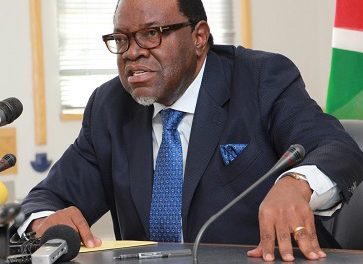
SADC, partners strategize on energy cooperation

By Kizito Sikuka
The SADC Secretariat and its energy sector cooperating partners will this week meet to discuss initiatives being undertaken by the region to ensure that power supplies meet demand.
The Southern African Development Community (SADC) is endowed with a wealth of energy resources that include solar, hydro, wind and coal, however, the region continues to be affected by a crippling power shortage.
The electricity shortfall that was first detected as early as 1999 and became more pronounced after 2007 has forced most countries to implement demand side management programmes such as load shedding.
While load shedding has to some extent succeeded in restraining the overall electricity demand in the region, the measure has greatly affected socio-economic development since the availability of energy is one of the key enablers of sustainable development.
Furthermore, the ongoing coronavirus pandemic, commonly known as COVID-19 has not spared the SADC energy sector to address its challenges.
For example, the long-term implications of the COVID-19 lockdown measures are more worrisome since significant delays are likely to be experienced on the implementation of both planned energy projects as well as those where construction had already commenced.
Faced with such challenges, SADC and its energy sector cooperating partners will convene a virtual meeting of the SADC Energy Thematic Group (ETG) on 5 May to discuss ways of ensuring a coordinated approach to regional energy cooperation and development.
The SADC ETG consists of representatives of the SADC Secretariat, SADC energy subsidiary organisations, International Cooperating Partners (ICPs) and a knowledge partner, the Southern African Research and Documentation Centre (SARDC).
The lead ICP for the energy sector is the African Development Bank (AfDB).
SADC energy subsidiary organisations are the Regional Electricity Regulators Association of Southern Africa (RERA), SADC Centre for Renewable Energy and Energy Efficiency (SACREEE), and the Southern African Power Pool (SAPP).
SAPP is a regional body that coordinates the planning, generation, transmission and marketing of electricity in southern Africa on behalf of member state utilities.
SACREEE is responsible for spearheading the promotion of renewable energy development in the region, while RERA regulates energy trading in the region.
SARDC is tasked with raising awareness among stakeholders about key regional energy issues.
According to the draft agenda, the meeting will discuss a wide range of issues, including progress on the implementation of priority energy activities, programmes and projects as well as investment in new projects.
Some of the priority projects include the construction of power interconnectors to allow SADC Member States to share surplus energy.
All mainland SADC Member States with the exception of Angola, Malawi and the United Republic of Tanzania are interconnected through the SAPP regional grid.
In this regard, construction of new interconnectors such as the Angola-Namibia Interconnector, the Mozambique-Malawi Interconnector and the Zambia-Tanzania-Kenya (ZTK) Power Interconnector is critical as it will connect the power networks of three non-operating members of SAPP Angola, Malawi and Tanzania to the regional grid.
The ZTK will not only link Tanzania to the SAPP grid, but also connect the Eastern African Power Pool to SAPP, allowing countries in eastern Africa to share surplus electricity with those in southern Africa.
With respect to investment in new energy projects, the region needs about US$114 billion to US$233 billion between 2012 and 2027 to develop additional electricity generation capacity, according to the Energy Sector Plan of the SADC Regional Infrastructure Development Master Plan.
Another issue for discussion by SADC and its energy sector cooperating partners is how the region could harness and explore renewable energy sources that are in abundance.
Renewable energy sources are not only affordable, secure and reliable, but are also less polluting to the environment compared to fossil energy such as coal.
The aim for SADC is to achieve a renewable energy mix in the regional grid of at least 35 % by 2030.
Currently, the regional energy mix is dominated by coal, which contributes more than 70%.
The SADC ETG is also expected to review its Terms of References to ensure that its operations and structure remains relevant and aligned to the changing dynamics in the energy sector at regional, continental and global levels http://sardc.net










































